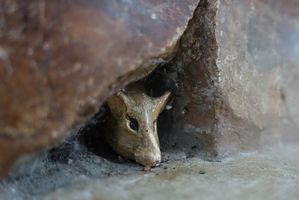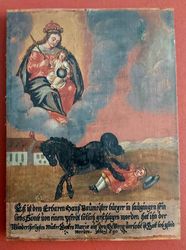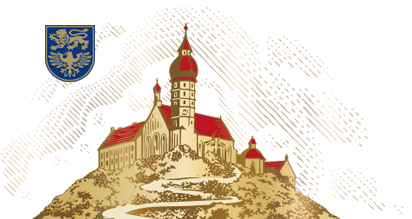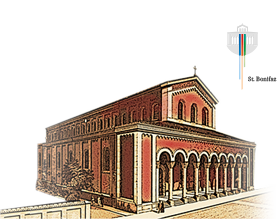Pilgrimage history
Andechs, former seat of the Counts of the House of Andechs, has been visited by numerous pilgrims since the 12th century. Bavaria’s oldest pilgrimage lives on to this day.
Count Rasso, ancestor of the Counts of Andechs, is said to have brought valuable Relics of Christ and holy relics to the Andechs Castle from a pilgrimage to the Holy Land in the 10th century.
High Middle Ages
Starting in 1128, Count Berthold II of Andechs made it mandatory for his subjects to annually worship the collection of relics kept here. Political events led to the decline of the family of counts starting in the 13th century. In 1246, the Andechs Castle was razed except for the castle chapel – the collection of relics was thought to be lost.
Loss and rediscovery

A mouse is said to have dragged fragments of a relic register into the light of day during a mass in this castle chapel in 1388. This clue supposedly led to the rediscovery of the buried collection of relics under the castle chapel’s altar. Subsequently the crowds of pilgrims started coming to Andechs again. The Wittelsbacher Duke Albrecht III founded the Benedictine monastery in 1455 for “the safekeeping of the collection of relics” and to look after the pilgrims.
Late Middle Ages
In the Late Middle Ages, Andechs along with Aachen and Trier was one of Germany’s three major pilgrimage sites. What was known as the presentation of the relics was also held in Andechs so the pilgrims could see and worship them, and call on the respective saint for intercession. Since the Pilgrimage Church was often too small for the large number of pilgrims, the relics were presented for worship from the jutty on the southern façade of the Pilgrimage Church, today the Hedwigskapelle.
Prayers, songs and litanies were spoken and sung for the presentation of the relics, depending on whether a Relic of Christ was presented, such as a particle of the Crown of Thorns, or the relic of a martyr. The pilgrims waited patiently on the square in front of the church, known as the Herrenhof, often for hours.
Marian pilgrimage

The manner and form of worshipping the collection of relics and the importance of relics in Christian rituals have changed over the centuries.
In the 16th and 17th centuries, Andechs also developed into a Marian pilgrimage site, so the Mother of God was worshipped in addition to the relics and the three Sacred Hosts.
The miraculous image on the lower high altar with the enthroned Mother of God and Infant Jesus bears witness to that even today.
Pilgrimage after secularisation
Changeful decades began for the pilgrimage with the dissolution of the monastery in 1803. However, it continued due to its importance and revived again after 1850. For example, the 700th birthday of Saint Elisabeth of Thuringia (from the family of the Andechs-Meranians) was celebrated in 1907. The relics procession was accompanied by the Bishop of Eichstätt, the Abbots of Scheyern, Metten, Ettal and St. Ottilien and members of the Bavarian royal family.
Worship of Saint Hedwig was added to the pilgrimage after World War II. For many displaced people, especially from Silesia, Andechs as the saint’s birthplace became a special point of reference to their old home, especially since Andechs has been home to a relic in the form of a fragment of Saint Hedwig’s skull since 1924.




